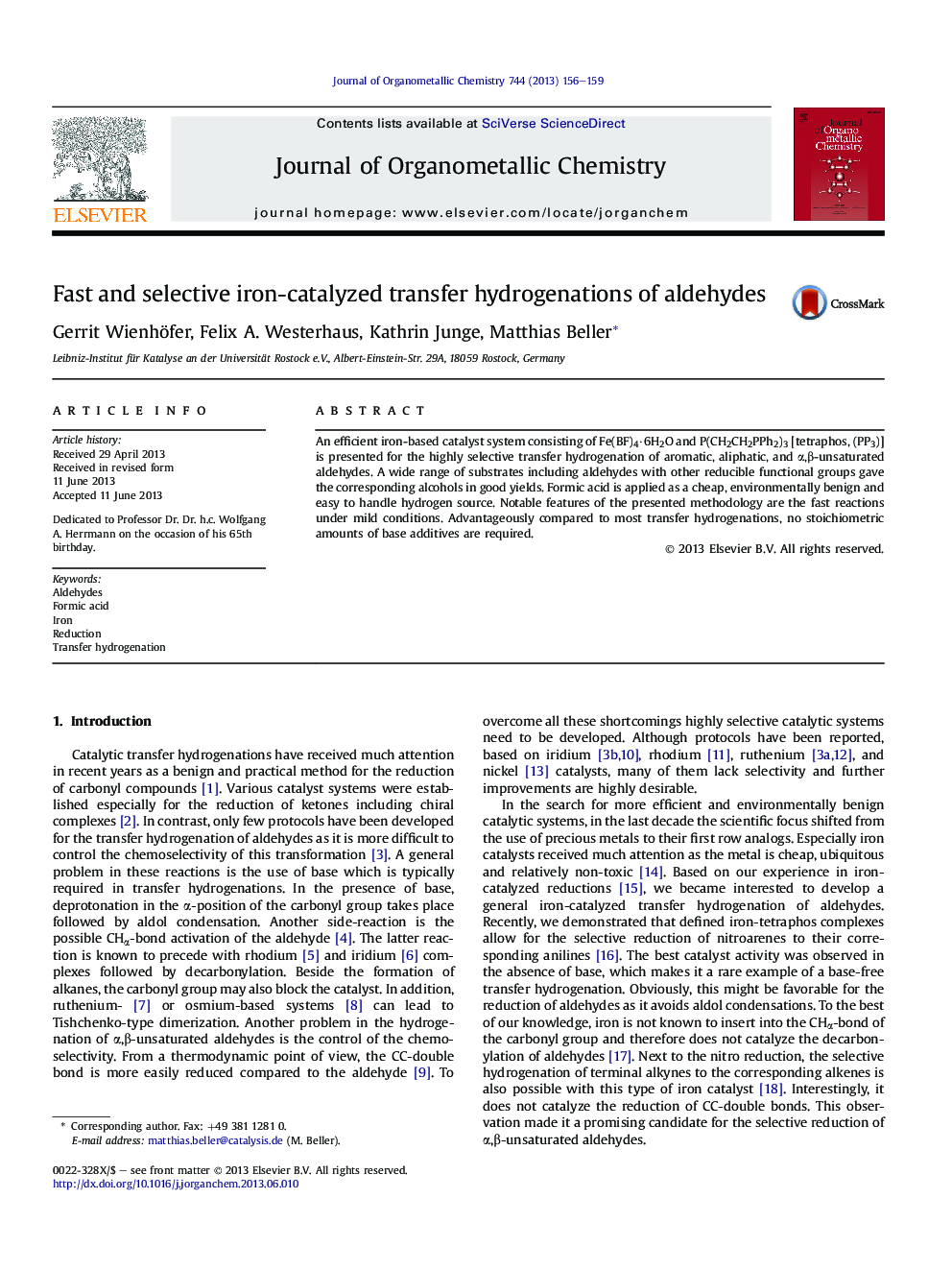| Article ID | Journal | Published Year | Pages | File Type |
|---|---|---|---|---|
| 1324403 | Journal of Organometallic Chemistry | 2013 | 4 Pages |
•We have developed an iron-phosphine catalyst for the transfer hydrogenation.•Aromatic, aliphatic and α,β-unsaturated aldehydes are reduced to their alcohols.•A range of functional groups, especially other reducible moieties, are tolerated.•The reaction proceeds fast and under mild conditions requiring no base.•Formic acid is applied as a cheap and easy to handle hydrogen source.
An efficient iron-based catalyst system consisting of Fe(BF)4·6H2O and P(CH2CH2PPh2)3 [tetraphos, (PP3)] is presented for the highly selective transfer hydrogenation of aromatic, aliphatic, and α,β-unsaturated aldehydes. A wide range of substrates including aldehydes with other reducible functional groups gave the corresponding alcohols in good yields. Formic acid is applied as a cheap, environmentally benign and easy to handle hydrogen source. Notable features of the presented methodology are the fast reactions under mild conditions. Advantageously compared to most transfer hydrogenations, no stoichiometric amounts of base additives are required.
Graphical abstractAn efficient iron-based catalyst system consisting of Fe(BF)4·6H2O and P(CH2CH2PPh2)3 [tetraphos, (PP3)] is presented for the highly selective transfer hydrogenation of aromatic, aliphatic, and α,β-unsaturated aldehydes.Figure optionsDownload full-size imageDownload as PowerPoint slide
